Garden Savvy Interview Series
In this episode, John Ehrling of Garden Savvy had the opportunity to interview C.L. Fornari The Garden Lady, to discuss gardening, authorship, radio, podcasting, and relaxation.
Please enjoy the video interview or read along below!
——
John Ehrling (00:01):
Thank you so much for doing this. I really appreciate it. So for those who are not familiar with your work, tell everyone who you are, where they can find you and how you got into gardening.
C.L. Fornari (00:18):
Okay, well, my name is C.L. Fornari. I use my initials. I have my radio audience convinced that they stand for compost lovers. So we will just leave it at that. I call myself a garden communicator. I write about plants and gardens. I speak about plants and gardens. I have a podcast that I co-host called Plantrama about plants and gardens, and I host a weekly radio show. So, all of that because I want to share my joy about plants and gardens with other people, and to help them to find their joy in those same things. So, that’s basically how I got started. I never intended to be a garden writer. I never intended to be a public speaker. I all my young life, all I wanted to do was make stuff. I wanted to go into my art studio and make stuff.
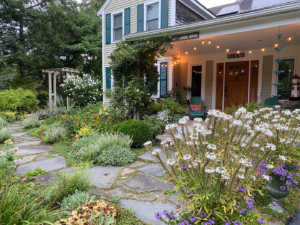
C.L. Fornari (01:21):
I was an art major in college. I then became a production hand weaver and worked with fiber and later transitioned to working with paper. But a lot of that work, frankly, had plants and gardens as its theme. I’ve always been interested in plants. And I credit that to the fact that I was fortunate enough to grow up in a time when kids were pushed outside and told not to come back until mealtime and we had to make our fun in the natural world, you know, and certainly my family and most of the kids that I grew up with, nobody had much money for anything. And so the natural world was our playground. Climbing trees and making forts and hanging out under the shrubs and poking around in the weeds, that was our entertainment.
C.L. Fornari (02:24):
I think that is what got me hooked on plants. And in fact my first quote unquote “professional job” having to do with plants was when I was in the second grade and my friend and I decided that we needed money to buy candy. How do you get money? You sell something. And so we found a stack of old flower pots behind the house that my parents were renting at the time. And we took those pots and we filled them with dirt. And then we scampered around the neighborhood, cutting flowers off of neighbors plants. In other words, stealing their flowers, which we then stuck into dirt in these flower pots and then sold them as potted plants door-to-door. I can only imagine that we must have been cute because we were selling them to the very same people we had stolen them from in the first place!
John Ehrling (03:30):
How entrepreneurial!
C.L. Fornari (03:31):
Yeah. That’s right. Well, since then, I’ve learned a lot more about the importance of root systems, and ethics, but that’s, that was kind of the germ of my interest in plants is as a kid playing out in the natural world.
John Ehrling (03:50):
Wow. That’s a very interesting story on how you started gardening. So, gardening in the maritime climate of Cape Cod must be difficult. What unique challenges do you face each season? Do you have a greenhouse?
C.L. Fornari (04:03):
I wouldn’t say it’s difficult. I would say that every region has its challenges. If you live in Santa Fe, New Mexico, it’s dry, right? If you live in Cape Cod, it’s moist and wet in the cold Spring, but on the other hand, it’s warm all Fall. So, there are conditions in every part of the country that a garden lover learns to dance with. And I would encourage people to view it as a dance, not as a battle, because if you go into battle with nature, you’re going to lose. Right? Because nature has the controlling interest here. But, if you view it as a dance, then you figure out the dance steps that are necessary, to grow things well. And where I am, what’s necessary to grow things well is to not plant too early because our nighttime temperatures go down in the thirties or low forties until the end of May. So we learn to not jump the gun on certain types of planting. We learn what plants thrive and which ones don’t. So in my case, I’ve learned to grow blueberries for my fruit, not apple trees, because in our humid climate, we have more diseases on the apples. And so the dance with growing an apple tree is more complicated. The steps are more complicated than the dance with growing blueberries. So yeah, you know, my time is important and I’m going to grow blueberries as a result.
John Ehrling (05:53):
Very cool.
C.L. Fornari (05:54):
Yeah.
John Ehrling (05:55):
Gardening can take place in many forms. Some people prefer to do flower gardens, others prefer edibles, orchards, micro-greens, hydroponics, the list goes on. What’s your favorite kind of gardening and what are you growing right now?
C.L. Fornari (06:10):
I would have to say my favorite is whatever I did 10 minutes ago. That’s like asking who’s your favorite child you know? There’s not a good response there. One of the things I love is growing edibles. I love growing vegetables. I love being able for a good six months of the year to walk into my front yard and say: “what’s for dinner?” And so, from about the end of May on to and through December, there’s always an answer from the garden. When I say what’s for dinner, there’s always an answer. I love that. I love flowers. I grow a lot of annuals. I grow a lot of perennial and flowering shrubs. Here in Cape Cod we are hysterical for hydrangeas and we have great happiness from growing hydrangeas.
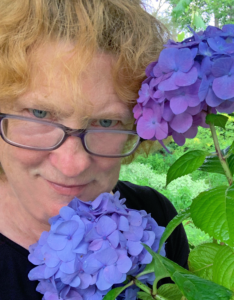
C.L. Fornari (07:10):
So, I grow a lot of those certainly. And what I have learned is that when you grow a diverse selection of plants, plants that flower at different times, plants that grow different ways, a good portion of native plants, flowers, and vegetables, if you have diversity in your yard and garden, there’s A) always something magical going on and B) you’re going to be successful in some way. You’re going to have failures. Sure. But you’re always going to be successful in one area or the other. And some years you’re successful with one thing and not the other. And then the next year you might be successful with what failed the previous year. That is kind of how the natural world works too. If we look at it, we realize that one year there is a certain plant that is spectacular everywhere we go and it catches our eye everywhere.
C.L. Fornari (08:23):
Then the next year, not so much. One year there seemed to be chipmunks everywhere you look. You can practically kick them out of the way when you walk through the yard. And then the next year, not as many. So, nature is often that way. There are bumper crops of whatever, you know? Whether it’s insects, animals, flowers, fruit, and then the next year something doesn’t do as well. And nature has reasons for it being that way. And if we pay attention to it, our experience with plants and gardens is going to be better because then we can learn, oh, this year that the broccoli was a complete failure. Or I hardly got any eggplant and knowing that the next year for any number of reasons, that crop may do better.
C.L. Fornari (09:27):
And you asked, if I had a greenhouse. No, I don’t have a greenhouse. I would love to have a greenhouse, but because of where I am and the shape of our property, the zoning involved, the orientation of the land, there was just no logical place to put a greenhouse. And we decided that it didn’t make sense to spend the amount of money that it would take to have something that really didn’t work that well. What I do have, however, as anybody interested in plants learns to dodge and weave and come up with different ways to do things. And, what I do have is a shed that half of it faces do South. My husband, built it, and it has clear panels on the roof and windows on the Southside, it’s insulated sides, top and bottom. In that shed, I am able to start seeds early in the spring. It’s solar heated, there’s no electricity, there’s no running water. But it is solar heated. And I am able to grow, any number of seedlings in there so that they’re ready to put out in the garden in May. So that’s how I have to compromise with no greenhouse, but if I ever move to another property, that’s the number one thing to that other property. I want a space for a greenhouse.
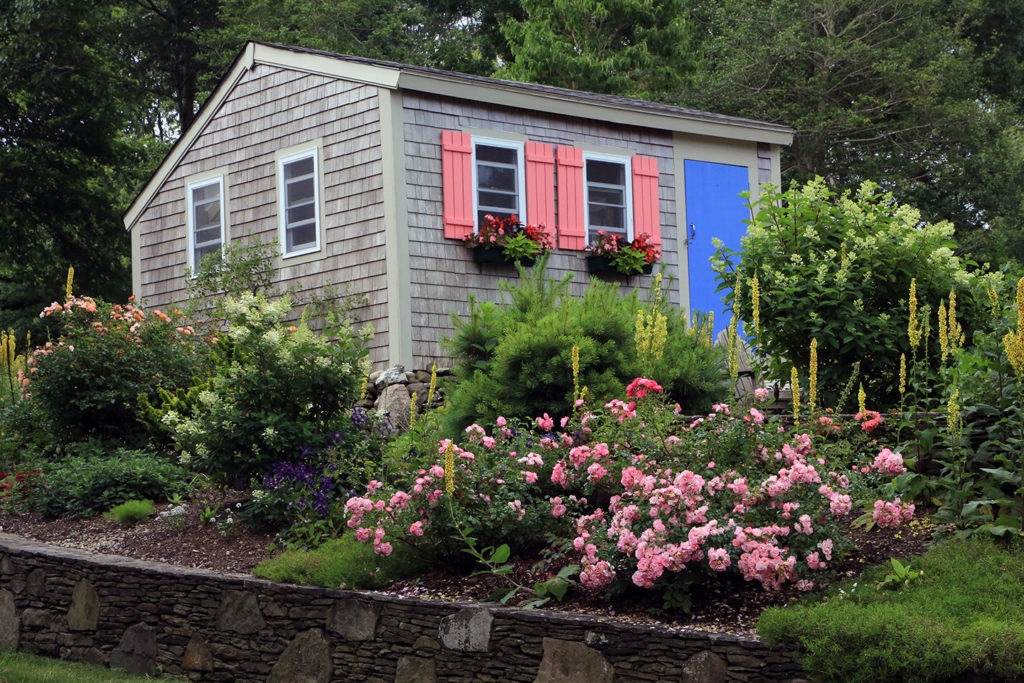
John Ehrling (11:00):
Well, I think that’s a good segue for my next question. It’s impossible to know everything about gardening. If you can go back in time, what is something about gardening you wish you knew when you first started?
C.L. Fornari (11:13):
When I first started, let me see. Well, okay. I’ll tell you one design tip that I wish I knew as a new gardener. I had a big space. I was interested in perennials and my instinct was to buy one of these and one of these and one of these and one of those and to plant them. And if I had the money to buy three of something, I would plant one of those three on one side of the garden, one in the middle and one on the other side of the garden. My garden was pretty, certainly, because if you put flowering plants together, it’s going to be pretty, but it never had the impact. It never had that “wow” appeal. And I realized a few years into gardening, what I was doing wrong, which was, I was planting in polka dots.
C.L. Fornari (12:13):
And so instead of planting those plants singlely, I should have been planting in groups of puddles, not polka dots because when you have a group of color, a group of flowers together, then it has impact. Then you know it has that “wow” factor. And so that’s something that I wish that I had known early. So that’s number one. And, number two, I think is as a new gardener I wish I had known to look more to how nature grew plants and use that as my model for how I treated the garden. Some of the garden advice that I got was maybe not necessary and something like, planting and mulching a garden very deeply. I would’ve seen that nature never dumps 12 inches of material on the surface of the soil. Yeah. It might be 12 inches of leaves when they’re nice and crispy and newly fallen, but once they pack down in the Spring, they end up being about an inch thick. Oh, that’s how nature mulches plants! Maybe I should take a hint.
John Ehrling (14:04):
You’re a speaker, author blogger, radio host, and avid gardener. How do you juggle so many commitments?
C.L. Fornari (14:11):
I, in fact, I think on one of my social platforms, under job description, it says professional juggler. I think everybody juggles, it’s a busy world. It is a busy world. And so right now I have a list for today in front of me. I have to launch a podcast, send an invoice to my radio station, contact an agent about a book I want to write and do some work in a volunteer organization. So my lists are long, but I think it’s all related. And that’s the thing. First of all, it all has to do the topic that I’m passionate about, which is plants and gardening. So that’s important is you’re passionate about what your work. Whether it’s technology or plants or food or whatever it is. If you’re passionate about it, then it all ties together. And, it’s easier to piece together all of those pieces of the puzzle. So for me, all of those things are related. They all feed each other. And as a result, you know, you make your lists and you go through it and you try not to get sucked down the rabbit hole of YouTube or social media for too long, so that you can get everything done.
John Ehrling (15:44):
You’ve written so many books and articles throughout your career. Do you prefer writing long form or telling short stories in your articles? Is one style of writing more challenging than the other?
C.L. Fornari (15:55):
Interesting. Yeah. That’s interesting. Well, they all have their challenges. In fact recently I’ve written two novels, which so far neither have been published. I’m actively trying to get an agent for the second one right now. First of all, let me just say that the creative process, when you are a person who has the desire to create something it starts with the willingness to walk down that path without knowing where it’s going to lead. So that’s really what it takes. An idea sparks your interest, and you have the willingness to go down a path and see where it goes. And sometimes it takes you someplace. Sometimes those seeds germinate… to use a garden analogy. And sometimes they don’t. The number of ideas that I’ve had that haven’t germinated are formidable.
C.L. Fornari (16:57):
But, the ones that have, are also numerous. I’ve had eight books published. So, that’s wonderful. I like writing short articles. They go quickly. The challenge with an article is to make it succinct, compelling, and to tell a story along with the information. So that’s the challenge in an article. It’s also the challenge in a book truly. You need to tell the story in a compelling way that people are both entertained and informed by it. And that’s true of a podcast. That’s true of a talk. So, I think all of those things, if you are a communicator, whether you consider yourself an influencer or a writer or a speaker or a podcaster, you are communicating, and the very, very first place to start in, all of those communications is who is in my audience and what do they care about? What are they and not only what do they care about? What are they feeling, right? Because if you start there and answer that question, know who is in the audience and what they care about and what they are feeling, and you aim your communications to that, you almost can’t go wrong. I mean, yes, there will be people that say no, and you don’t get something published, but that’s where it all starts.
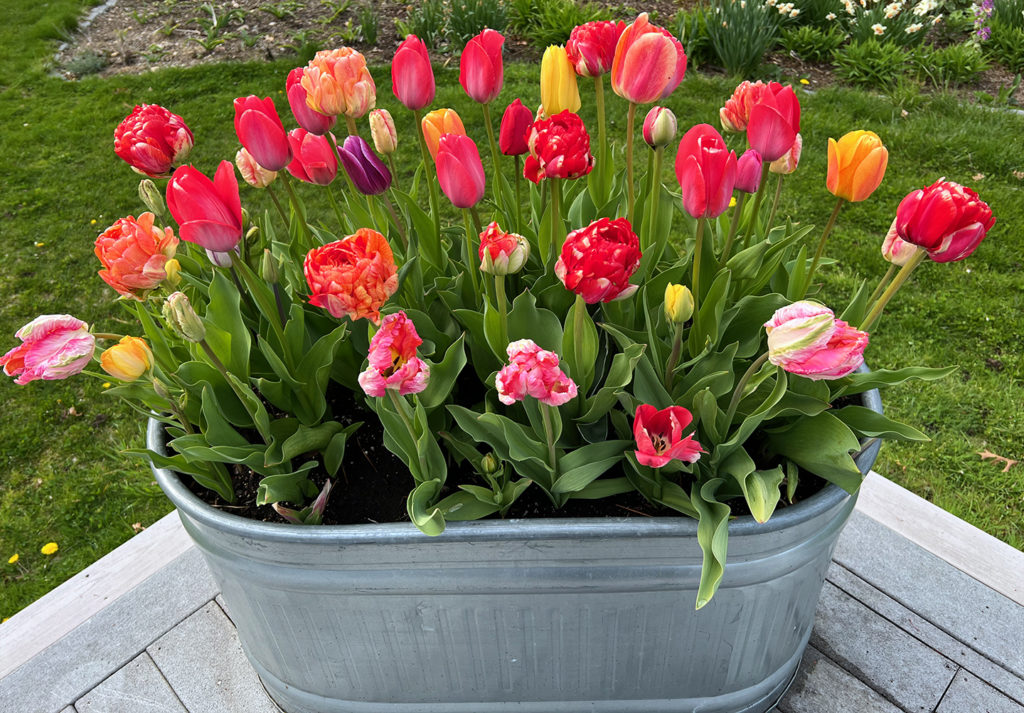
John Ehrling (18:44):
So I recently had the privilege of getting to listen to you speak a couple days ago, and I know getting in front of a crowd and speaking can be difficult. In fact, stage fright is a very common fear amongst many people. When did you realize you wanted to start traveling and going to speaking engagements and conferences? Comparing your first speaking event to today; how do you prepare and psych yourself up?
C.L. Fornari (19:07):
You know, they say that in surveys more people are afraid of public speaking than are afraid of dying? When I speak about speaking, I will say: “so that means that there are people in this audience who would rather be dead than to be up here where I am now?” Right? I certainly recognize that. And when I began speaking, I was certainly nervous. I did some speaking in high school. I was active in drama in high school and, forensics. It’s what they called it back then. I don’t know if they call it the same thing now, but I was active in that speaking sort of arena in high school. I did not do any of it early on. I guess I did speak when I was a hand weaver, I spoke a couple of times at weaving fiber conventions about a technique that I used.
C.L. Fornari (20:15):
So I think, you know, there are some people who are just kind of drawn toward teaching. And I think you have to be drawn toward teaching to be a speaker, or you need to be so passionate about what you do, that you want to get comfortable sharing it with others. And the way you do that is the way you get comfortable with typing on a keyboard, you practice, right? Nobody is born knowing how to type quickly but you do it. And the more you do it, the better you get. And it’s exactly the same with speaking. The more you do it, the better you get. And so, practicing, and I speak about speaking skills which I do often say, you need to not only rehearse, but you need to rehearse out loud, standing up and, and you do that.
C.L. Fornari (21:23):
You need to rehearse out loud as often as possible. And I, used to say to people, go over your talk in the car when you’re driving. Now in the old days, you know, 25 years ago, when you would do that, other cars would give you the hairy eyeball and pull away from you, because they thought there was a crazy person! Now (today) of course, everybody thinks you’re on a hand free cell. So you can rehearse a talk driving along. No one gives you a second look. Perfect, perfect! So, by just doing it more often the easier it becomes, it truly does. And rehearsing is the name of the game. And for anyone, who is listening to this and is interested in a public speaking, join Toastmaster, you know, every region has a Toastmasters group and that’s what they’re all about, supporting people, becoming comfortable speaking in front of other people.
C.L. Fornari (22:25):
And the more you do it, the more you realize that it’s just like telling a story around the dinner table. And I often tell people, as I say, I never intended to be a speaker. And as a kid, I was the type of kid that hid behind her mother skirts in a crowd, you know? And my mom once said to me, “it’s so amazing what happened with you because you used to be so shy and, unable to talk to anyone. And now here you are, you know, on the radio and speaking to people.” And I thought to myself, “well, mom, I’m still that shy person. I still feel that way. I still have a hard time going up to strangers at a conference or at parties or whatever.”
C.L. Fornari (23:17):
But what you learn is that how you feel is one thing and how you behave is another. And so you can behave as if you are not a shy person, and getting up in front of an audience, you can behave as if you are not afraid of public speaking when I, and you know the more you behave a certain way the more you yourself buy it and, and everybody else buys it from the get-go. They have no idea that inside you’re thinking, “oh, I would rather crawl under a rock than to be in front of you today.”
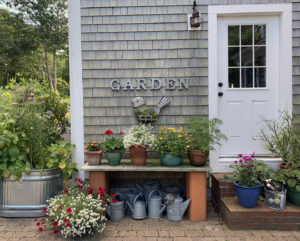
John Ehrling (24:01):
I want to discuss your remarkable radio show, GardenLine. Speaking on the radio. Is it dream for many broadcast majors out there? How do you prepare for a show and how did you take your first steps into the spotlight and start your radio debut?
C.L. Fornari (24:15):
Yeah, well, radio is an interesting place and it’s completely different than podcasting. And the thing about radio is, first of all, you need to talk somebody into giving you air time and there are several ways that can happen in the world of radio. In the world of radio there are some people who want a radio program and they actually buy their time from the radio station. There are some people who want a radio program, and they talk a radio station into paying them for their time. And there are some people who have that radio time and in return, they have to sell the advertising. So anybody who’s interested in radio, particularly commercial radio, but this somewhat applies to public radio as well; the money part of it is key and has to be worked out, you know?
C.L. Fornari (25:11):
There are several options for doing that. I got my start in radio because I am a member of Gardencomm, which is the association of garden communicators. At that time it was called garden writers. In one of the Gardencomm publications they mentioned that there was a guy in Boston who was starting a public radio program called the cultivated gardener. They gave the name of the guy who was going to be producing it, George Homsy. And so I looked up George Homsy because I live near Boston, and I sent George an email saying I’d like to be part of this, and here’s what I’d like to do. I proposed doing a weekly segment on the cultivated gardener called “In the Garden Center.” It was a two minute segment that tackled a certain topic, that people needed to know about.
C.L. Fornari (26:19):
I had two minutes to make it, fun, engaging and give all the information and wrap it all up. So, George said yes! And the host Michael Weishan said yes. So for a year I would go up to Boston and record those two, minute segments. I would go up and record a month worth of segments and they’ll get plugged into that public radio show. And after I can’t remember how long we were on the air, maybe two years, but at that point, the show folded for funding reasons. At that point I decided, you know, I really love radio. I’ve always loved listening to radio. I listen to audio books. I love that way of taking in information. And so I then started approaching my local stations and I ended up going to a local talk radio station with a proposal that they said yes to.
C.L. Fornari (27:22):
And now I have for, I think almost 25 years, I think it’s close to my 25th anniversary. I have hosted this or maybe it’s the 20th… anyways. I have hosted GardenLine, which is a call-in show. It’s a live call in. I never know what is gonna come in on the air. I never know. All I know is when my board operator puts up a name and the town, somebody is calling from, I have no idea in advance what they’re going to ask. Right? So it’s kind of fun that way. It’s a challenge, certainly. Mainly how I prepare for the show every week is I have regular segments. I start out with a plant that I love and talk about that. I start out the second hour with a rant or a rave about a garden practice or product in the wintertime.
C.L. Fornari (28:15):
I have a guest for half an hour. But during the growing season, I just take calls. And I usually have in mind, a few things that I know are happening in the area or with plants and gardening or something, that, you know, caught my eye as a plant lover. And in between calls, I will talk about that. And otherwise people ask me questions and you know, most of the time I know the answer and occasionally I don’t, but on the times that I don’t know the answer, I’m happy to say, “you know what, I have no idea, but I’m gonna look into that and, and I’ll report back.” It’s fun that way. My listeners are the most gracious people on earth because I often give them an answer that they don’t want to hear. Like, “no, you can’t make that 20 foot tall tree be 10 feet tall again.” And so sometimes I’m telling them an answer that they really don’t want to hear, and yet they’re gracious anyway. So, that’s a nice thing. It is.
John Ehrling (29:28):
You also run the popular podcast Plantrama with co-host Ellen Zachos, aside from the format, how does Plantrama differ from your radio show? How do you encourage your audience to listen to both your podcast and radio show?
C.L. Fornari (29:42):
Plantrama was actually designed to first of all, appeal to a national audience. My radio show, although I have listeners from the Midwest through the East coast, not so much on the West coast, because it goes on the air at 5:00 AM there, but Plantrama was really designed to be a national program – number one. Number two, the name itself says that it was conceived to be a program about plants, not just about gardens and gardening. And that was deliberate for several reasons. First of all, because, my co-host Ellen Zachos and I saw that many people today, they are gardening, they are growing plants, but they don’t consider themselves gardeners. And so we wanted a name that brought those people in. We wanted to bring in people who only grew house plants. There are many people who that is their experience with plants is, growing plants, indoors in containers.
C.L. Fornari (30:51):
And Ellen, her background is very different than mine. For years she was an urban gardener. She took care of terrace gardens on the top of buildings in Manhattan. She helped wealthy people who had greenhouses on the top of those buildings to have beautiful tropical plants in their greenhouse. And that’s where she got her start. Her interest in plants was with city gardening, her house plants. And then she personally became very interested in foraging. And so I don’t want to go out in the field and work for my plants, look for my plants. I want to grow them in my garden, in my front yard or my backyard and I’ve never gardened on rooftop terraces. So we complimented each other very nicely with different experiences and we don’t always agree. So, that makes for a more lively podcast as well.
C.L. Fornari (31:59):
In the podcast we don’t have call-ins. We don’t have guests. It is us doing certain regular segments and things that we are interested in and things that we know that maybe newer gardeners are interested in. And we have, I would say, a larger population listening to us of new gardeners as a result. That was kind of our goal. To reach people and to get them excited about everything from some obscure botanical terms that they might want to know about, to a pasta recipe using what’s in their vegetable garden.
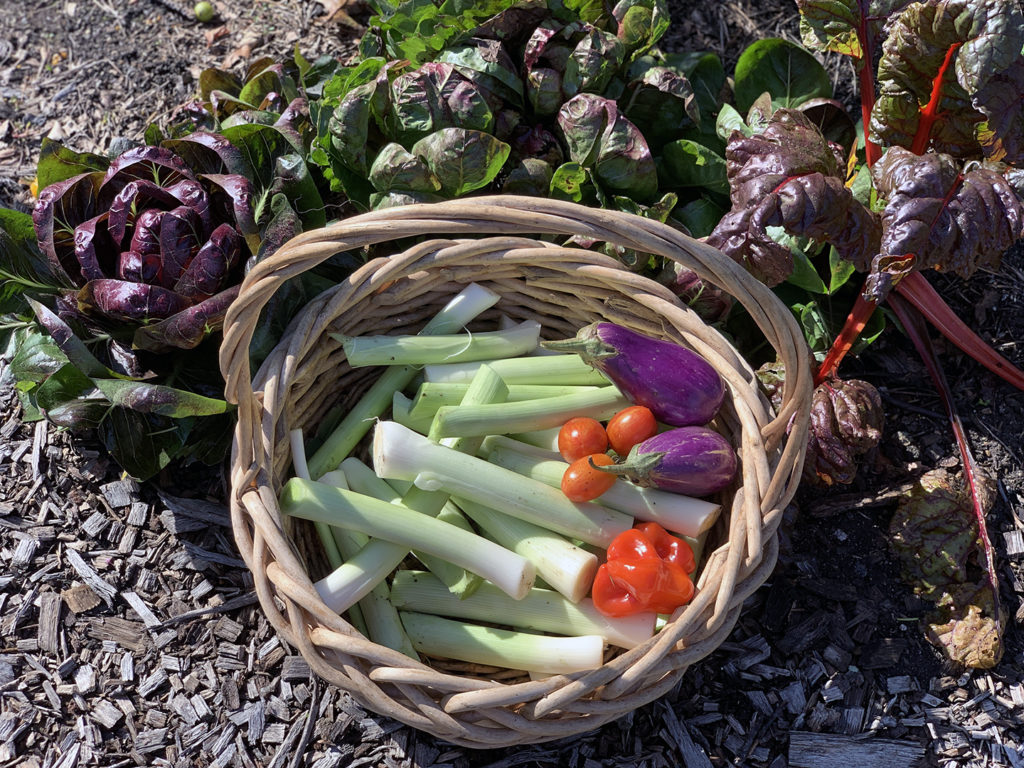
John Ehrling (32:54):
What are your thoughts on social media? How has social media impacted the gardening community, which platform has the greatest impact?
C.L. Fornari (33:03):
Well, you know, when it comes to social media, whether it’s gardening or anything else, you can really rave about how amazingly wonderful it is, and you can rant about how amazingly horrible it is. In gardening, it goes both ways. On the one hand having social media allows people to have a regional group where gardeners can share information and that’s great, and pictures that are inspiring. And so since all gardening is regional, that is wonderful. It’s no longer, you know, we aren’t just limited to certain national gardening magazines, that you can, you know, be talking with people in your area about what’s going on with plants and gardens right in your area. That’s a wonderful thing. And, it’s a visual social media. It’s a visual world out there and gardening is a visual subject. So that is a wonderful thing.
C.L. Fornari (34:07):
It’s horrible in that so much misinformation gets passed around, recipes for Epsom salt concoctions and salt and vinegar to kill weeds. Don’t do it people, don’t do it! Pictures that are put together as sort of instant eye candy are bad information. Photoshopped rainbow roses, rainbow tomatoes, you know, all of that kind of false in information makes the rounds. And then there’s the whole shaming aspect of social media. And it extends to the plant world as well. And it’s a problem, you know, that people should not be shamed for liking a particular plant or for not wanting to let a dandelion stay in their lawn. Yeah. I understand, dandelions may provide some support for bees, and I have dandelions in my lawn, don’t get me wrong. But on the other hand, somebody who doesn’t want dandelions in their lawn should be allowed to ask, “how do I get rid of the dandelions in my lawn?” So, you know, the same pleasures and problems with social media exist with gardening, just like anything else. And I just want to encourage everybody to be nice, stay polite, and think three times before you press send!
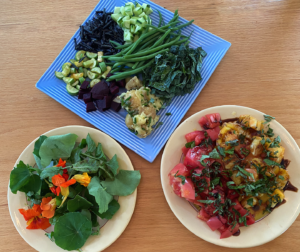
John Ehrling (35:53):
I’m sure you know, that millennials are obsessed with social media. What do you think we can do to engage millennials and get them interested in gardening?
C.L. Fornari (36:02):
Well, I think, first of all, Instagram has done so much for getting millennials involved in gardening. Number one, number two, food was the original gateway drug to horticulture for millennials. It certainly was for my kids. I remember about, oh, I don’t know, 10, 15 years ago visiting my youngest son in California. And they had recently moved into a house. And I said to him, “you know Simon, that slope that you have there should really be planted with a selection of succulents.” And he looked at me like, I was out of my mind, and he said, “mom, I have a very hard time planting anything that’s not edible.” So I think growing safe food and tasty food and the awareness, you know, millennials certainly have a much better awareness about the effect of people’s diets on this planet than the baby boomers ever did.
C.L. Fornari (37:08):
And that influences what they are interested in growing, which is great. And so that was, I think the beginning gateway drug for them, the second gateway drug of course, was house plants. And I think we have Instagram to thank for that. Suddenly bringing green indoors became as hot. You know the 21st century as it was in for the baby boomers in the late sixties had a house plant craze, late sixties and early seventies, and you know, ask any baby boomer about macramé house plant hangers and they’ll say “oh yeah.” In fact, you know, history does repeat itself because for the baby boomers, it was the “back to the land” movement.
C.L. Fornari (38:05):
And it’s very similar today. Every generation discovers things new for themselves, which is a wonderful thing and claims it as their own, which is a fantastic thing. I think it’s up to all of us, no matter how old you are. You know, there’s a garden communicator, Emma Biggs. Who’s like, I think she’s 12 years old right now, and she’s getting people hooked on plants and gardening. So, you go girl! I think it’s up to the people who are excited about plants and to make it accessible always to the younger people. And they will find a way to make it theirs and, and run with it.
John Ehrling (39:02):
When you’re not working or in the garden. What other hobbies do you have? What do you do to unwind?
C.L. Fornari (39:08):
To unwind? Well, I love cooking which is certainly related to gardening, I do love to cook. What I do to unwind is Photoshop. This goes back to my roots as an artist, right? And so making stuff, that’s what you can do and Illustrator and Photoshop are amazing. And so that’s what I do to unwind. I will at night do something on Photoshop and create! That’s probably the biggest, other than cooking. That’s the biggest thing that I do for just for pure pleasure. Yeah. I use those skills in my books, my talks, and my work. I certainly use those graphic skills, but that’s what I do just for the fun of it. I listen to other podcasts and stream any number of movies and series and all of that.
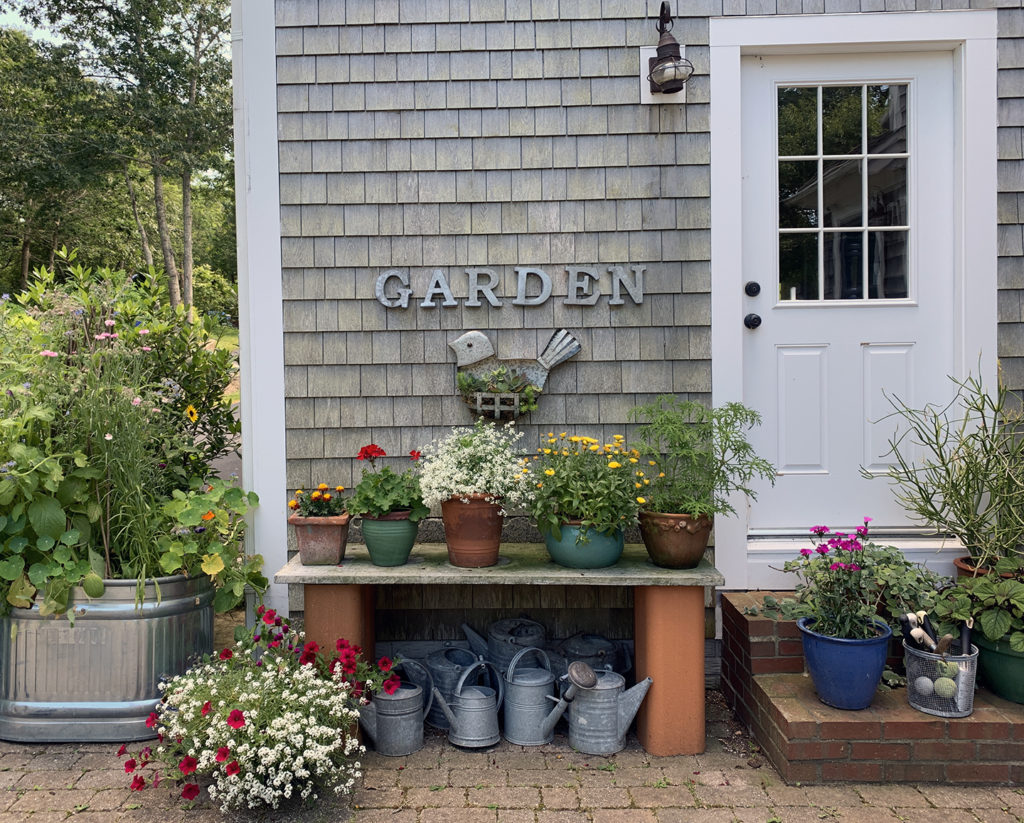
John Ehrling (40:14):
Do you use your Photoshop skills to create the graphics for all of your books and articles?
C.L. Fornari (40:20):
Yes. Yes. I, you know, I created the logo for Plantrama for example. I use those skills that way. Right now I’m working on a new book proposal that is going to be illustrated with a combination of sort of three dimensional collages that end up having some Photoshop work with them. So I’m almost in the ready, ready to pitch that to a couple of publishers. I’m hoping that that will land somewhere and continue to germinate.
John Ehrling (41:14):
So, final question, where can everyone find you if they want to follow you and learn more?
C.L. Fornari (41:19):
Thank you. Well, my website is GardenLady.com. All my social connections are there. I’m the GardenLady on Instagram and The Garden Lady on Facebook and Twitter. Look for me there and LinkedIn. All of those connections are on my website and there’s a connection there to Plantrama as well. Plantrama can be found at Plantrama.com. That’s the podcast website. On my GardenLady website there is a link to stream my radio show which is on iHeart media and the link to the recordings of that radio show, which are podcasts on iHeart media. So, yeah, and I hope people stay in touch!
John Ehrling (42:12):
Well, thank you very, very much. Appreciate it. Those were all my questions.
C.L. Fornari (42:16):
It was a pleasure to be with you today. Thank you so much.
If you enjoyed this content and want to plant your own garden, try our garden planner Hortisketch.











